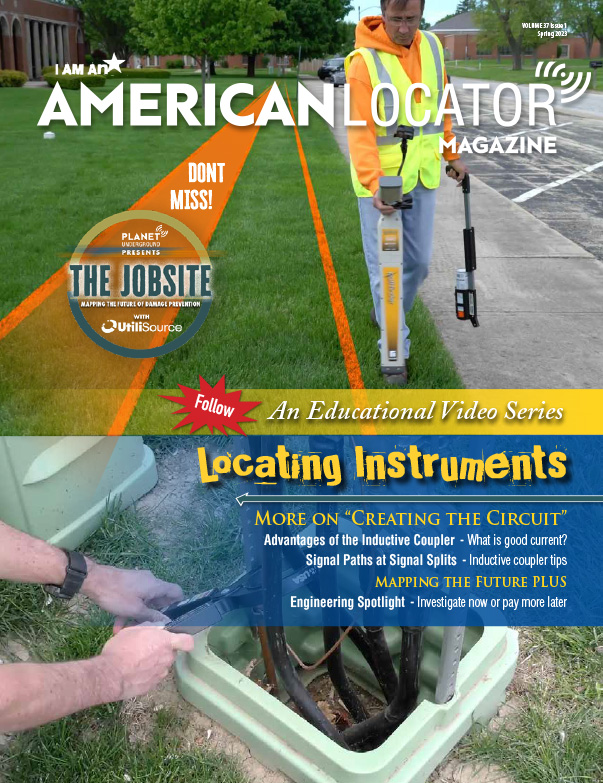(Creating the Circuit) Milliamps and Power: Part 2
Our bare concentric three-phase primary ran on the north side of the street. We’re going to locate an insulated tracer wire along the south side of the street. You’ll recall (see “Milliamps and Power: Part 1”, Vol. 36-3), with 100 mA of push, we were able to get this far on 512 Hz (Figure 34). On the tracer wire, we’re going to utilize 33 kHz (Figure 35).
Two hundred milliamps is going to be our output. We asked for 400, but we didn’t get it. There’s a reason the transmitter could not hold 400mA of flow. You’ll notice we’re not grounded to the ground stake. Instead, we are grounded to the steel pipe that goes west from the hook-up point. We’re locating the yellow tracer wire but are grounded to a red test wire that connects to the steel main (Figure 36).
It’s important to look at signal strength, peak and null, digital depth, and to some degree, the current measurement indication. On this receiver (Figure 37), the current measurement indication is in the upper right-hand corner. As we begin this locate, we have a current measurement reading of 57 mA, a digital depth of 3-feet, 8-inches, and a signal strength of 2903.

This Story is a Subscriber Exclusive.
Our bare concentric three-phase primary ran on the north side of the street. We’re going to locate an insulated tracer wire along the south side of the street. You’ll recall (see “Milliamps and Power: Part 1”, Vol. 36-3), with 100 mA of push, we were able to get this far on 512 Hz (Figure 34). On the tracer wire, we’re going to utilize 33 kHz (Figure 35).
Two hundred milliamps is going to be our output. We asked for 400, but we didn’t get it. There’s a reason the transmitter could not hold 400mA of flow. You’ll notice we’re not grounded to the ground stake. Instead, we are grounded to the steel pipe that goes west from the hook-up point. We’re locating the yellow tracer wire but are grounded to a red test wire that connects to the steel main (Figure 36).
It’s important to look at signal strength, peak and null, digital depth, and to some degree, the current measurement indication. On this receiver (Figure 37), the current measurement indication is in the upper right-hand corner. As we begin this locate, we have a current measurement reading of 57 mA, a digital depth of 3-feet, 8-inches, and a signal strength of 2903.

